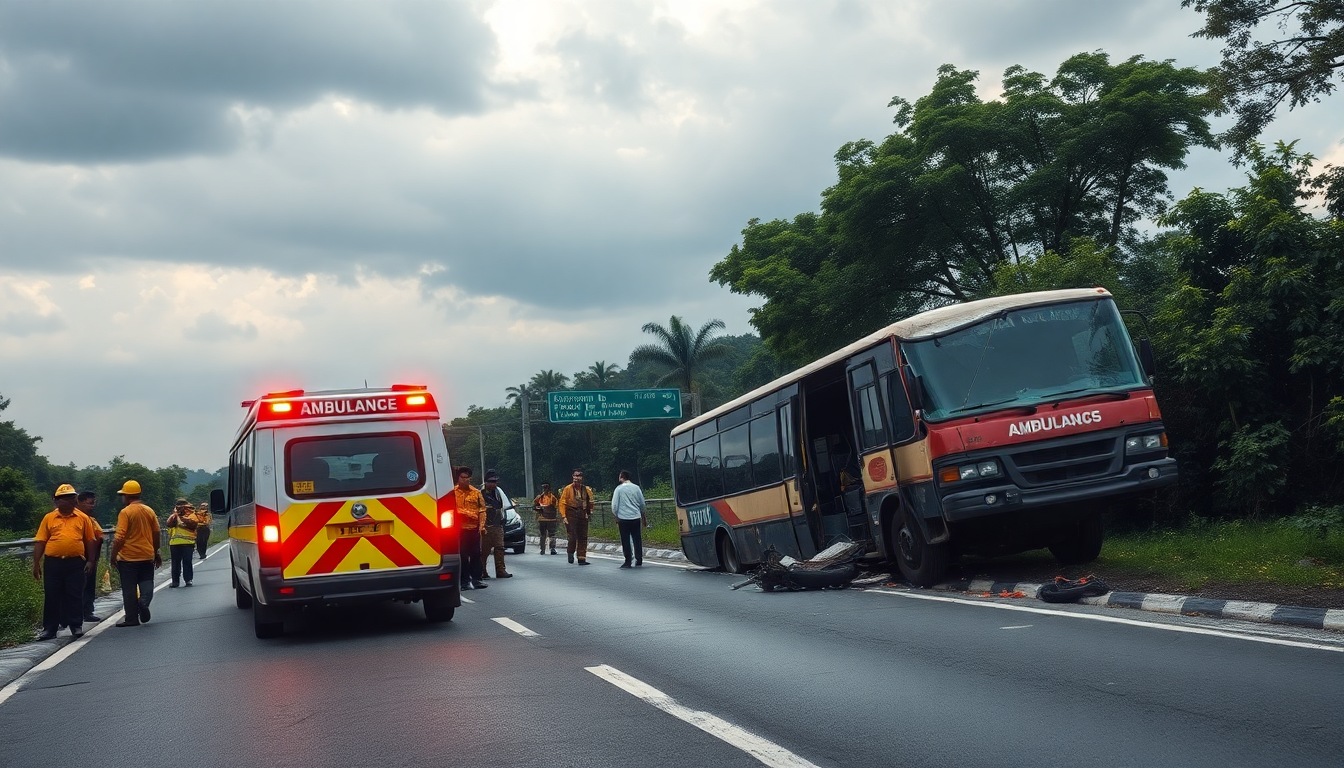Table of Contents
The recent surge in mass casualty accidents in Vietnam has set off alarm bells nationwide. After a tragic boat capsizing in Ha Long Bay that claimed the lives of 38 people, another calamity struck when a tour bus crashed, resulting in the deaths of ten individuals, including two children. These heartbreaking incidents not only highlight the urgent issues surrounding road and water safety but also stress the need for thorough investigations and reforms to prevent such tragedies from happening again.
Overview of the Bus Accident
The fatal bus accident unfolded on a national highway in Ha Tinh province, where an overnight sleeper bus was making its way from Hanoi to Da Nang. Witnesses described a horrifying scene as the vehicle veered off the road, colliding with roadside markers before overturning. Tragically, five domestic tourists heading to Da Nang—a city celebrated for its stunning beaches and vibrant culture—were among the deceased.
Survivors recounted the utter chaos of the crash. One individual shared, “I couldn’t sit up as my body and my hands were smashed into the side of the bed.” This powerful statement underscores the violent impact of the collision, especially for those in the front sleeper bunks, who sustained the most severe injuries. In total, twelve individuals were injured and rushed to local hospitals for treatment.
In the wake of this tragedy, Prime Minister Pham Minh Chinh has called for a comprehensive investigation into the circumstances surrounding the accident. His demand reflects a growing concern over the safety of transportation systems in Vietnam, particularly as the country experiences a surge in tourism and road usage.
Context of Road Safety in Vietnam
Traffic accidents in Vietnam are a persistent issue, with the National Statistics Office reporting 5,024 fatalities in the first half of this year alone. While this number is a slight decrease from the previous year, it still signifies a significant loss of life and emphasizes the ongoing challenges faced by the country in ensuring safe travel for both citizens and visitors.
The recent wave of accidents raises questions about the effectiveness of current safety measures and the enforcement of traffic regulations. Often, poor road conditions, inadequate vehicle maintenance, and insufficient driver training contribute to the high rates of accidents. How will the government respond to these incidents? The answer will be crucial in shaping future policies aimed at improving road safety.
Moreover, this unfortunate event follows closely on the heels of the Ha Long Bay boat disaster, which saw rescuers still searching for one missing passenger. Together, these incidents spotlight the urgent need for a thorough review of safety practices across all modes of transportation in Vietnam.
Implications and Recommendations for the Future
As Vietnam continues to develop its tourism sector, ensuring the safety of its infrastructure becomes increasingly critical. The government must prioritize investigations into these tragic events to pinpoint systemic issues and implement necessary reforms. This could include stricter regulations for transportation providers, enhanced training for drivers, and improved maintenance protocols for vehicles.
Additionally, public awareness campaigns can play a vital role in educating both travelers and locals about safety precautions while using various modes of transportation. By fostering a culture of safety, can Vietnam work towards reducing the incidence of such tragic accidents?
Looking ahead, the focus should be on creating a safer environment for both residents and tourists. Investments in safety infrastructure, coupled with a commitment to rigorous enforcement of traffic laws, will be essential in preventing future tragedies. The road ahead may be challenging, but with collective efforts from the government and the community, there’s hope for a more secure transportation landscape.


